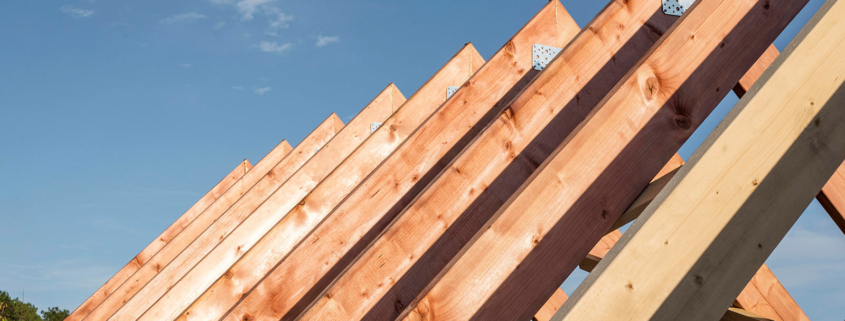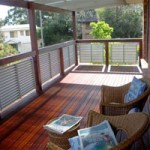The Benefits of Using Softwood in Construction Projects
Softwood is one of the most commonly used building materials in Australia. This is because of its versatility and cost-effectiveness, offering numerous advantages that make it an attractive option for construction projects.
In this article, we will explore the various benefits of incorporating softwood into construction projects, ranging from its sustainability and ease of processing to its aesthetic appeal and structural resilience. Discover how softwood can enhance the efficiency, sustainability, and overall quality of your construction endeavours.
What is Softwood?
Softwood refers to wood that is obtained from coniferous trees, such as pine, spruce, cedar, and fir. Unlike hardwood, which is derived from deciduous trees, softwood is characterised by its relative ease of growth, making it a readily available and sustainable building material.
This type of wood comes from trees that belong to the gymnosperm family, which includes coniferous (cone-bearing) trees. These are the types of trees we usually associate with evergreen forests – pines, spruces, firs, cedars, and redwoods.
Unlike deciduous trees (which produce hardwoods), conifers tend to keep their leaves year-round. You’ve probably seen their needle-like leaves and cones. They’re often called “evergreens” because they retain their leaves throughout the year.
You can identify softwood by looking at its grain pattern. It’s usually straighter and more uniform compared to the often-complex patterns found in hardwoods. This straight grain also makes softwood a bit easier to work with, whether you’re sawing, planning, or shaping it. Softwood boards are easier to work with, making them perfect for construction projects and DIY enthusiasts.
Softwood is known for its versatility and is commonly used in various construction projects, including framing, flooring, siding, and outdoor structures. Its unique properties make it an essential component in the construction industry, offering both practical and aesthetic benefits.
How Does Softwood’s Cellular Structure Affect Its Properties?
Softwoods lack something called vessels, which are the pores you see in hardwoods. Instead, they have a simpler system of long, narrow cells called tracheids that transport water. Tracheids, combined with the presence of resin canals, contribute to softwood’s unique characteristics:
Lighter Weight
Generally speaking, softwoods have a lower density than hardwoods, making them lighter. Think about how heavy oak is compared to pine. This lower density means they’re easier to handle, transport, and work with. This difference is explained by the more porous nature of hardwoods.
Easier to Work
That straight grain and lower density mean softwoods are often simpler to cut, carve, and shape. While some harder softwoods can be a bit more challenging, they’re still generally considered more beginner-friendly than hardwoods for woodworking projects.
Resilience
This might surprise you. Some softwood species (like pine and fir) are very strong. This resilience makes them excellent choices for structural framing, especially in residential construction. Douglas fir is especially renowned for its structural properties.
Natural Durability
Thanks to softwood’s resin canals, many softwoods have a natural resistance to rot, decay, and insect infestation. Cedar, for example, is famous for its natural insect-repelling oils. This durability makes them a solid choice for outdoor applications where the wood will be exposed to the elements.
The Sustainability Factor: Why Softwood Gets Top Marks
As concerns about environmental sustainability grow, softwood has emerged as a front-runner in wood products. This is because softwood trees tend to grow faster and mature quicker than hardwoods.
A lot of this comes down to the structure of their wood, enabling more rapid growth. Faster growth means that forests can be replanted and harvested more quickly, making softwood a more sustainable and renewable resource.
Softwoods are also abundant in nature. The majority of the world’s timber comes from softwoods. This makes them a readily available option, putting less strain on endangered or slow-growing hardwood species. They’re often used for building components, making them essential for any construction project.
Common Softwoods in Australia and Their Applications
Just as hardwoods have their stars – like the sturdy oak or the luxurious mahogany – the softwood family has a diverse range of species, each with unique traits that make them suitable for specific tasks.
Common softwood species offer a wide range of colours and grain patterns, making them suitable for various aesthetic preferences.
Pine
Pine is the most commonly used softwood in Australia with a light color that ranges from pale yellow to light brown. It has a straight grain and is easily workable. Pine offers good strength and stability, making it an excellent choice for construction projects including framing, flooring, pine decking, and cladding. They are also popular for crafting furniture and interior mouldings.
The H2 Structural Treated Pine, the H3 Structural Treated Pine, and the Primed H3 Treated Pine are examples.
Spruce
Spruce is characterised by its creamy white to pale yellow colour and lightweight yet strong nature. It has a fine, even texture and minimal resin content, which allows for easy machining and finishing. Spruce is commonly used for framing, panelling, and millwork projects, offering versatility and strength in various applications.
Cypress
Cypress is a highly durable softwood that features a distinct light to medium reddish-brown colour. It has a unique grain pattern and a natural preservative oil, making it resistant to decay. Cypress is frequently used in outdoor applications such as fencing, decking, and pergolas, providing both visual appeal and long-lasting performance.
Hemlock
Hemlock has a light to medium reddish-brown colour with pale sapwood. It exhibits good dimensional stability, machining properties, and strength. With a fine, uniform texture, hemlock is commonly used for millwork, framing, and general construction needs in Australia.
Fir
Fir is a softwood that ranges in colour from pinkish-white to pale yellow. It has a high strength-to-weight ratio, a straight grain, and a uniform texture. Fir is often chosen for its structural capabilities and is frequently used for beams, rafters, and trusses, providing strength and stability in construction projects.
Use Softwood for Your Construction Projects Today
Softwood plays a huge role in our everyday lives, even though we may not always realise it. The next time you see a wooden house frame or walk across a pine floor, you’ll know it’s from softwood trees.
The more you learn about softwood and the differences between various species, the better equipped you’ll be to choose the perfect lumber for your specific needs and preferences.
Ready to enhance the efficiency, sustainability, and overall quality of your construction projects? Incorporate softwood from Carrolls Wholesale Timber for your construction project in Australia. Feel free to contact us today to explore our range of sustainable and high-quality softwood options.



